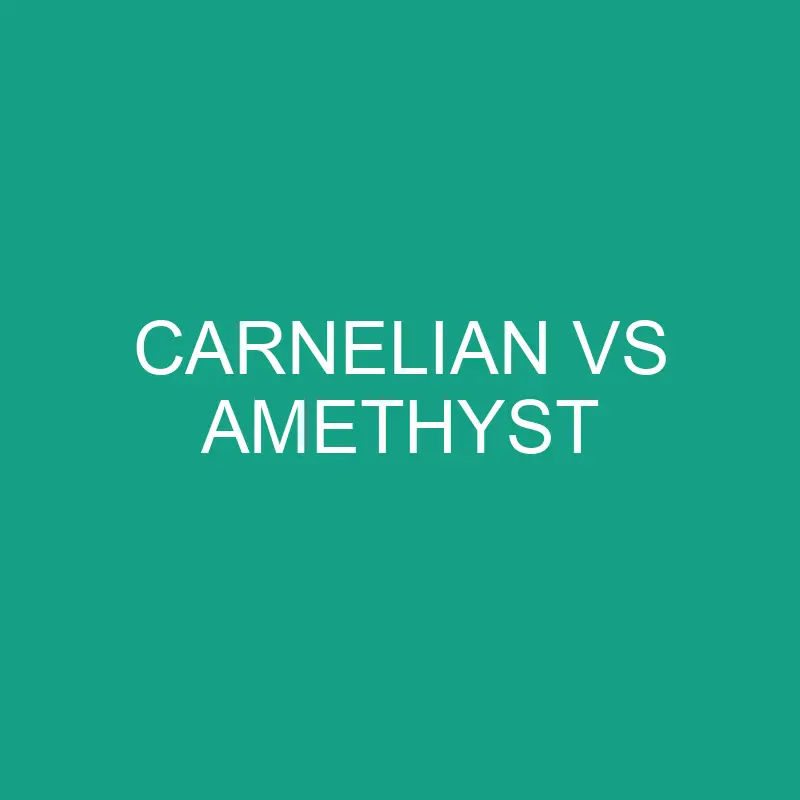Carnelian and amethyst are two distinct gemstones, each with its unique characteristics in terms of color, composition, and metaphysical properties. Let’s explore the differences between carnelian and amethyst:
Carnelian:
Origins and Geology:
- Composition: Carnelian is a variety of chalcedony, which is a form of microcrystalline quartz. Its distinctive orange to reddish-brown color is due to the presence of iron oxide.
Physical Properties:
- Color: Carnelian ranges in color from pale orange to deep red-brown. It may also exhibit shades of yellow and brown.
- Transparency: Carnelian is typically translucent to opaque.
- Luster: It has a vitreous (glassy) to waxy luster.
- Mohs Scale: Carnelian has a hardness of 6.5 to 7 on the Mohs scale.
Uses:
- Jewelry: Carnelian is widely used in jewelry, often cut into cabochons, beads, and cameos.
- Carvings: It is used for carving ornamental items, cameos, and small sculptures.
Metaphysical Properties:
- Energizing: Carnelian is associated with energy, courage, and motivation.
- Sacral Chakra: It is believed to align with the sacral chakra, promoting creativity and passion.
Amethyst:
Origins and Geology:
- Composition: Amethyst is a variety of quartz and gets its purple color from traces of iron and aluminum within the crystal lattice.
Physical Properties:
- Color: Amethyst ranges in color from pale lilac to deep purple. The intensity of color can vary.
- Transparency: Amethyst is transparent to translucent.
- Luster: It has a vitreous (glassy) luster.
- Mohs Scale: Amethyst has a hardness of 7 on the Mohs scale.
Uses:
- Jewelry: Amethyst is a popular gemstone for jewelry, including rings, necklaces, and earrings.
- Carvings: It is used for carved items, including figurines and intricate sculptures.
Metaphysical Properties:
- Calmness: Amethyst is associated with calmness, balance, and spiritual growth.
- Third Eye and Crown Chakras: It is believed to align with the third eye and crown chakras, enhancing intuition and connecting to higher states of consciousness.
Carnelian vs. Amethyst: Key Differences
Color:
- Carnelian: Orange to reddish-brown, with shades of yellow and brown.
- Amethyst: Pale lilac to deep purple.
Transparency:
- Carnelian: Translucent to opaque.
- Amethyst: Transparent to translucent.
Luster:
- Carnelian: Vitreous to waxy.
- Amethyst: Vitreous.
Mohs Scale:
- Carnelian: Hardness of 6.5 to 7.
- Amethyst: Hardness of 7.
Uses:
- Carnelian: Used in jewelry and carvings.
- Amethyst: Widely used in jewelry and carved items.
Metaphysical Associations:
- Carnelian: Associated with energy, courage, and the sacral chakra.
- Amethyst: Associated with calmness, spiritual growth, and the third eye and crown chakras.
Conclusion:
Carnelian and amethyst are both stunning gemstones with unique qualities. Carnelian, with its warm orange to red-brown hues, is associated with energy and creativity. Amethyst, known for its purple shades, is linked to calmness and spiritual growth. The choice between carnelian and amethyst often comes down to personal preferences in terms of color, metaphysical associations, and the desired aesthetic for jewelry or ornamental items. Both gemstones contribute to the rich variety of the mineral kingdom, offering beauty and meaning to those who appreciate them.

